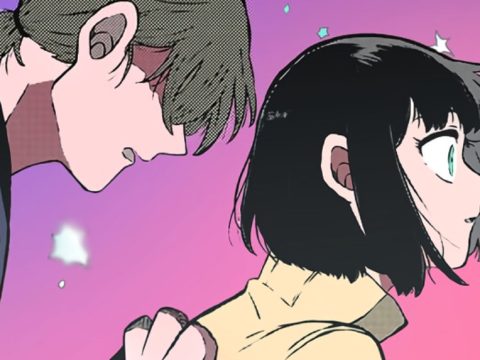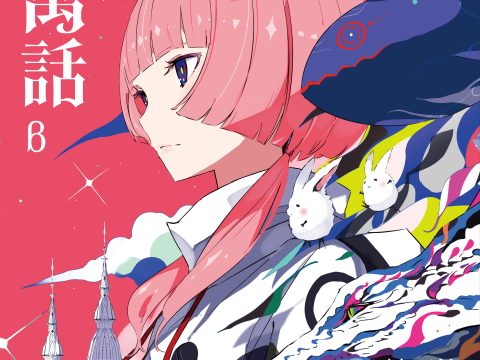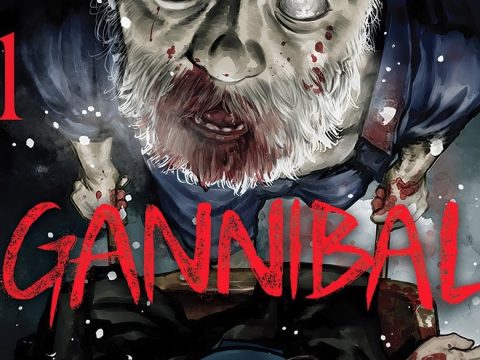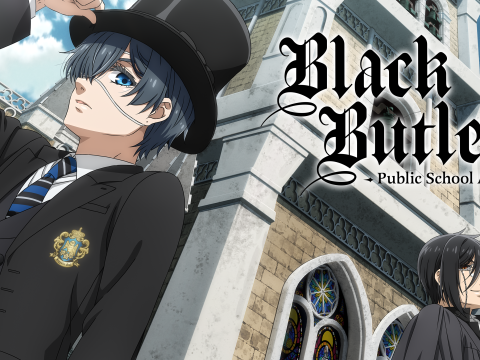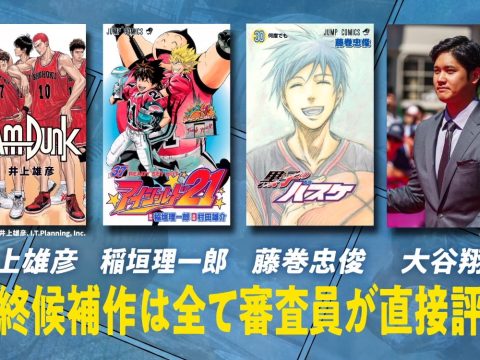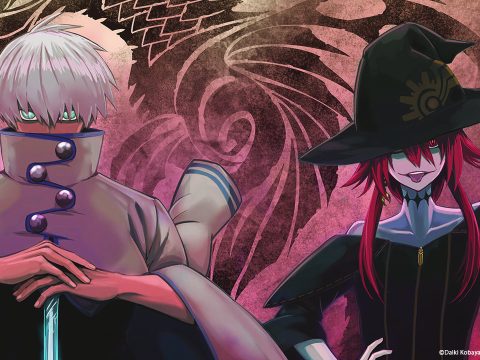
It’s a bit surprising that one of the world’s best comics about football (that is, American football) comes from a country better known for its love of baseball, soccer and basketball: Japan.
That manga, Eyeshield 21, is the brainchild of writer Riichiro Inagaki, a football enthusiast who, against all odds, made a comic about that uniquely American sport a hit in Japan. We chatted with Inagaki at Otakon Vegas and tried to divine the secrets of his success.
When you started Eyeshield 21, how did you go about researching American football?
I already had an interest in football before I started Eyeshield, and it just happened to match the characters. Of course, that wasn’t sufficient, so I did all the research I could. I watched high school football, college football, Japanese pro football and of course American pro football.
Since football isn’t very popular in Japan, did you have any problems connecting with Japanese readers, or have any concerns with Japanese readers not being interested?
 Yes, it was a big worry that the popularity of the manga would plummet as soon as football was depicted. The magazine in which the manga was published, Shonen Jump, has a very strict policy where any manga gets canceled immediately if it plummets in popularity. So I put a lot of precautionary measures into the story. For example, the first time we showed football in the story was episode four or five. This was a very important episode, because if the popularity of the manga plummeted there, I was going to change it into a Kamen Rider-style masked hero story. The title “Eyeshield 21” would’ve referred to that mask. Thankfully that didn’t happen, and I was cleared to do a proper football story.
Yes, it was a big worry that the popularity of the manga would plummet as soon as football was depicted. The magazine in which the manga was published, Shonen Jump, has a very strict policy where any manga gets canceled immediately if it plummets in popularity. So I put a lot of precautionary measures into the story. For example, the first time we showed football in the story was episode four or five. This was a very important episode, because if the popularity of the manga plummeted there, I was going to change it into a Kamen Rider-style masked hero story. The title “Eyeshield 21” would’ve referred to that mask. Thankfully that didn’t happen, and I was cleared to do a proper football story.
Eyeshield 21 ended up lasting 334 chapters over seven years. How did it feel to finally finish?
After a couple years of working on the series, I couldn’t even imagine getting out of this work hell, and I thought at the end I’d yell something like, (Inagaki jumps up and yells in English) “Yeah, I finished!!”
But the truth is, at the end I said to my staff, “well, we’re never going to be coming back here,” locked the studio door, and that was it.
When I got home, I locked away all my books, DVDs, and reference materials. For about a year and a half after I finished the manga, I couldn’t stand to look at anything football related or my own manga. But after about a year and a half, I took a look at Eyeshield as a reader and said to myself, “hey, this is pretty enjoyable.”
Since most manga is written and illustrated by the same person, you’re kind of unique as a writer who collaborates with artists. What are the benefits of that style?
The biggest advantage is scheduling. A weekly serial, Japanese style, isn’t really a humanly possible workflow, so splitting it into two is a huge advantage.
The second point could be taken as a good thing or a bad thing depending on who you ask, but… it’s not possible to do a 100% transfer of intent from the writer to the artist, and there’s always going to be a reinterpretation taking place. For me, that’s something I cherish and consider as good, because something I didn’t intend will sometimes end up in the manga. Some people may take that as a negative, but I consider it a great synergy that creates something better than the sum of its parts.
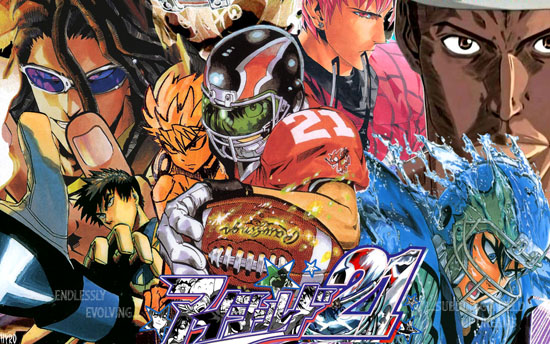
You started off writing for Big Comic Spirits, a magazine aimed at older readers (seinen). Were there any difficulties switching to Shonen Jump, which is aimed at younger readers?
Well, back in the day seinen and shonen were really separate, but lately the line between them has been getting fuzzy. But I did have a few problems. For example, there’s a character in Eyeshield named Agon. He’s a real ladies’ man, a very strong character. I asked myself, “if this guy really existed, what would he be doing before a game?” In reality, he’d probably be laying with the ladies. But I can’t depict that in a shonen magazine. That’s one example of a limitation.
One of your earliest works was an entry in the Manga Koshien (an amateur manga contest). Can you tell us a little about that?
The Manga Koshien event isn’t a regular manga artist event, it’s usually something college students do for fun. You don’t do a long story, just a single panel. I don’t mean to belittle the endeavor, and it’s a good place to forge your skills, but that’s where it ends.
Do you remember your entry?
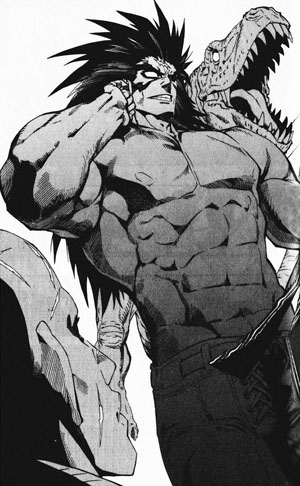
Yes, I remember. (laughs) It’s difficult to describe, but… in Kochi prefecture, where the Manga Koshien was held, there’s a famous ocean current called Kuroshio… (in English) “Japanese black wave?” In any case, most of the entrants drew something very artistic depicting the wave, but I decided it would be funny if I spilled a bunch of black ink on the paper, as if I’d messed up the manga. People really liked that for some reason. But Manga Koshien isn’t something I’m so fond of remembering (laughs).
Can you tell us anything about your new project, Alpha Centauri Zoo?
It’s a 100 page science fiction story split into two installments, coming out this January and February. I put a lot of effort into it, so if you can give it a look, I’d be very happy.
Can you compare working with artists Yusuke Murata (Eyeshield 21) and Katsunori Matsui (Alpha Centauri Zoo)?
Yeah, they’re quite different. There are different “names” that make Murata’s style come out well and “names” that make Matsui’s style come out well, so when I find out who’s going to be drawing the work, I fit my “names” to them. For example, Murata’s probably the best in the world at drawing action scenes, so there’d be a lot of action in manga drawn by him. Matsui draws very clear, easy-to-read pop art, so I modify my writing in that way for him.
Would you ever go back to doing both art and writing?
Not really. There are plenty of artists who can draw better than I can.
I heard your studio is called “Kome Studio” (Rice Studio). Why did you choose that name?
Three reasons. For one, the kanji for my last name, Inagaki, uses the kanji for rice. Secondly, in Japanese the rice kanji is used to represent America, and thirdly, I was thinking of the Rice Bowl.
Do you have any favorite American pro football teams?
I get asked this a lot, and if I absolutely had to choose, it would be the St. Louis Rams. The only real reason is for their former player Marshall Faulk. He’s small and nimble, and as Japanese fan I identify with small and nimble players. But the truth is, I don’t really have a favorite team, I just have a love for the sport.
This story originally ran in the 1/7/14 issue of the Otaku USA e-News
e-mail newsletter. If you’re not on the mailing list, then you’re reading it late!
Click here to join.
Related Stories:
– A Brief History of Unusual Sports Anime
– For Love of the Game: A Baseball Anime Primer
– Tough: Where MMA = Manly Manga Antics
– Ping Pong: Nothin’ But Love
– Baseball Anime Grand Slam


